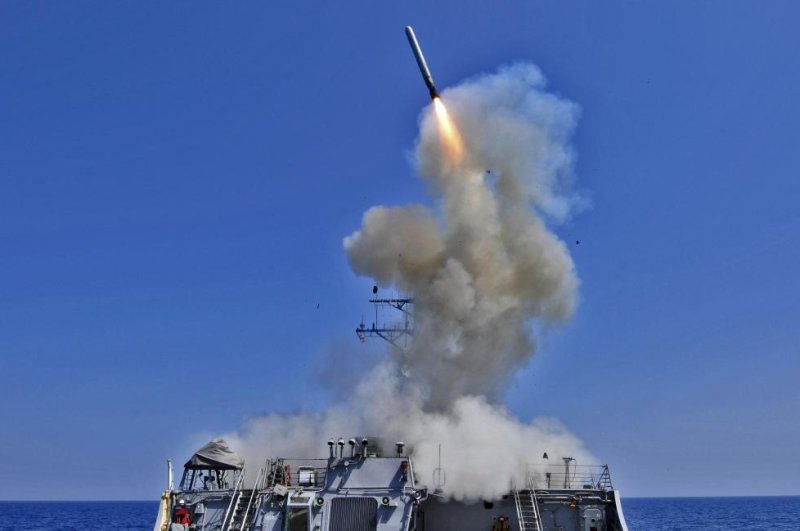The U.S. Department of Defense plans to upgrade the Tomahawk cruise missile from a land attack to anti-ship version, allowing it to be used against moving targets. U.S. Navy photo by Petty Officer 3rd Class Jonathan Sunderman
WASHINGTON, Feb. 4 (UPI) -- U.S. Defense Secretary Ash Carter revealed the U.S. Navy made a $2 billion budget request to buy 4,000 Raytheon Tomahawk cruise missiles for fiscal 2017.
The Navy's budget request is part of the Future Years Defense Program, which aims to expand the missile's capability and service life, after orders for the missile dwindled in recent years. Carter detailed the budget request during his recent tour at the Naval Air Weapons Station in China Lake, Calif.
"We are making sure that we're making the investments we need to do in modernization," Carter said.
Carter's comments come after the Defense Secretary discussed President Obama's $582.7 fiscal 2017 budget request for the Pentagon on Tuesday, which initially set aside $1.8 billion for munitions.
The Pentagon's plans for the Tomahawk cruise missile include enhancing its capabilities to allow it to be used against moving targets. Raytheon originally developed the missile as a land-attack missile launched from naval platforms. Carter says an anti-ship version of the Tomahawk will make it a more lethal weapon.
Raytheon has been testing a new seeker for the Tomahawk for more than a year.
"The point is these are large investments in the strategic future at the high end, aimed at making sure that our systems have the greatest capability, the greatest lethality in this case, of anybody else," Carter added.
Tomahawk cruise missiles, which are capable of carrying either a nuclear or conventional payload, are designed to fly at low altitudes at subsonic speeds. They were first used in combat during Operation Desert Storm in 1991.















